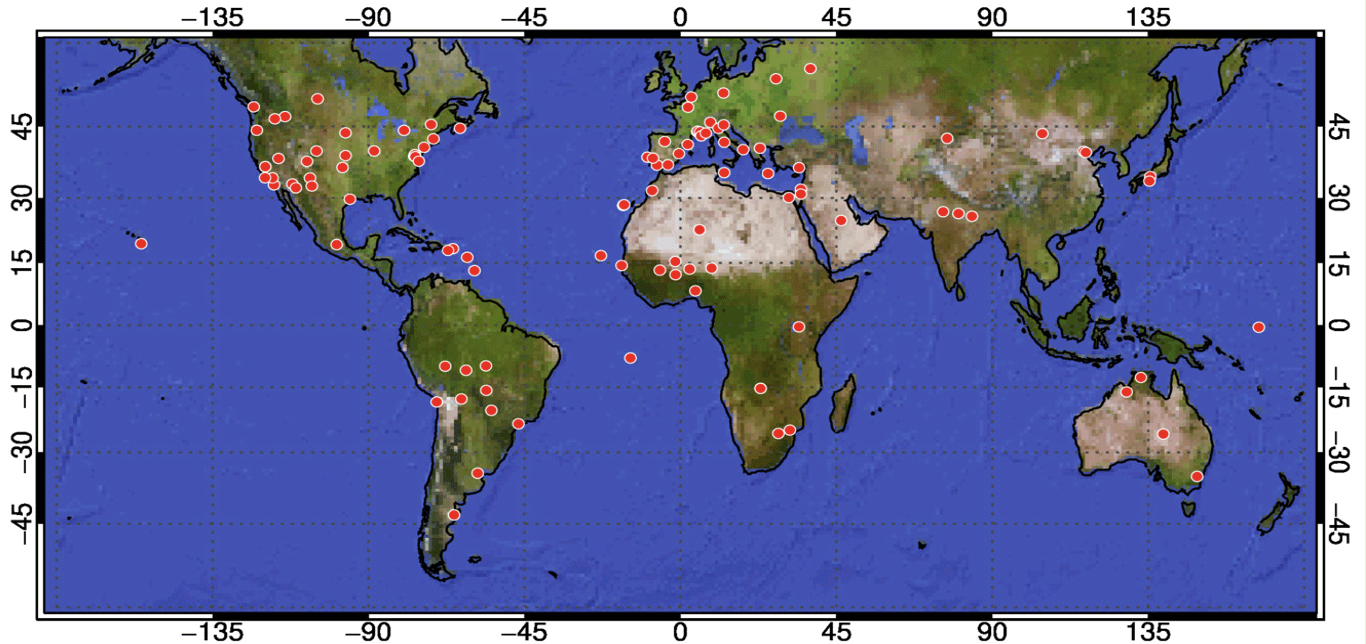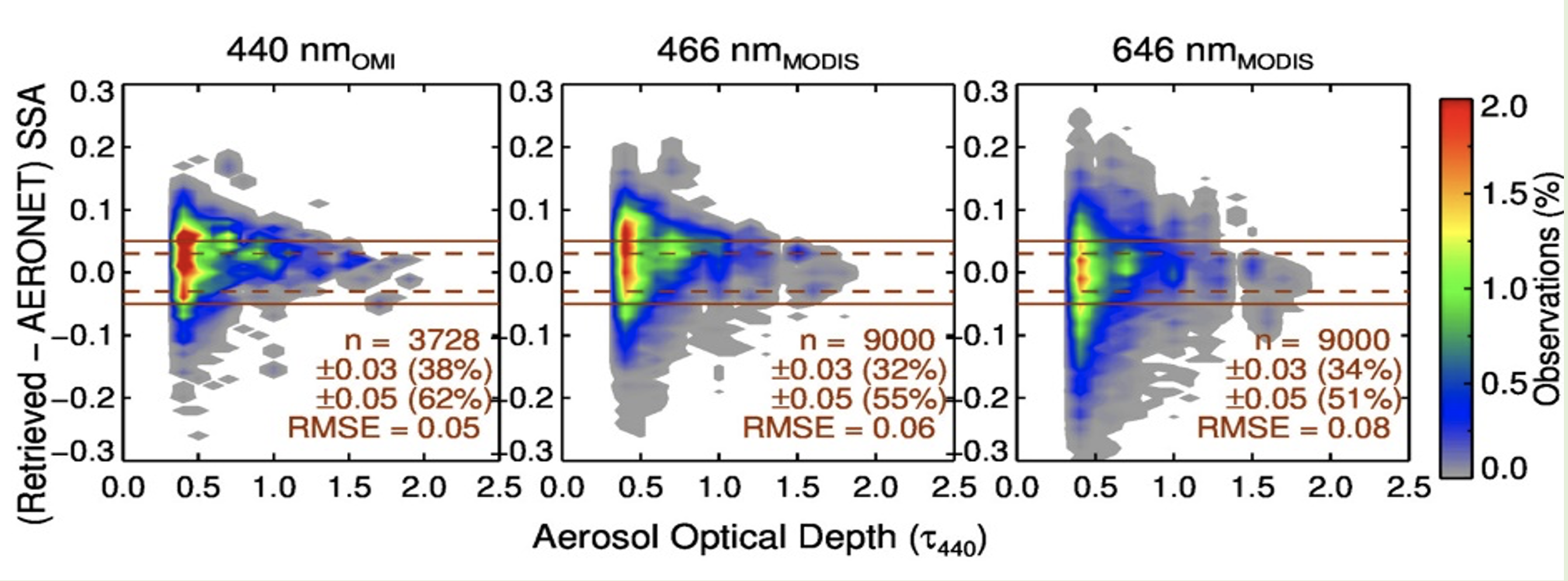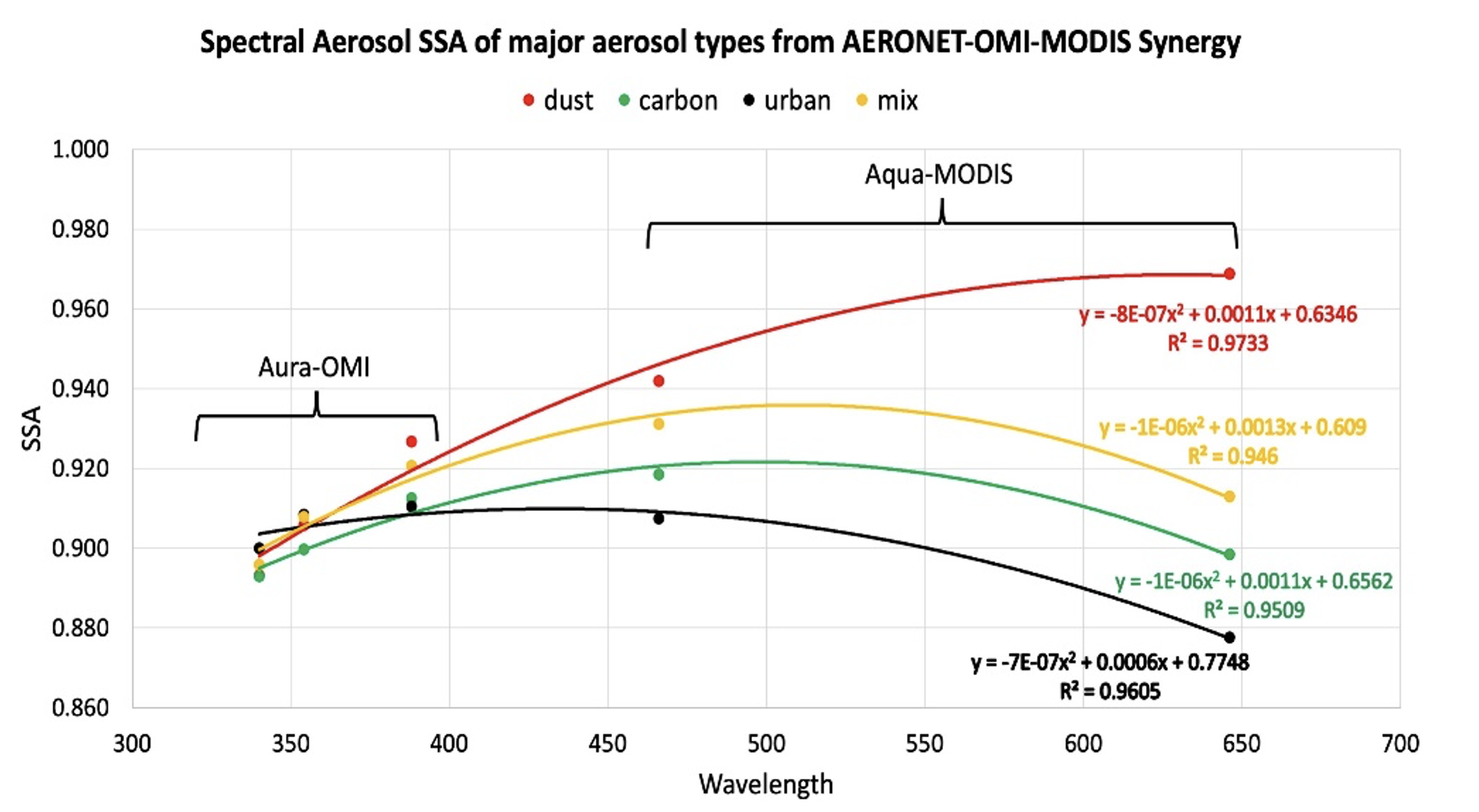Measuring spectral aerosol absorption remains a challenging task in aerosol studies, especially in the UV region, where ground and airborne measurements are sparse. Here, we introduce a synergy algorithm that combines ground measurements of aerosol extinction optical depth from 110 AERONET sites with OMI-MODIS observations of radiance during the satellite overpass times to derive spectral single scattering albedo (SSA, ωo) of aerosols in the UV-to-visible wavelength range (340–670 nm). The derived aerosol ωo(λ) data set provides a valuable addition to the existing aerosol absorption record from AERONET by extending it to the near-UV region.
Broader significance: In addition to improving our understanding of spectral aerosol absorption properties, the combined UV-VIS dataset also offers wavelength-dependent dynamic aerosol absorption models for use in the satellite-based aerosol retrieval algorithms, such as for the upcoming TEMPO and PACE mission.

Figure 1 : Globally distributed, selected AERONET sites over which the proposed synergy algorithm was applied.
12 years (2005-2016) of ground-satellite collocated data is used.
Our technique to retrieve aerosol SSA assumes no prior spectral dependence.
Sensitivity tests show that our retrieved aerosol SSA has reliable accuracy for observations with τ400 > 0.4 spanning UV-VIS :
Up to ±0.04 for carbonaceous, dust, and ± 0.07 for urban aerosols.
Compared to AERONET inversion product (V3) , 38% (62%) of our retrieved aerosol SSA observations are within ±0.03 (±0.05) at 440 nm.

Figure 2 : Absolute difference in retrieved minus AERONET SSA as a function aerosol optical depth at 440 nm for all aerosol types.

Figure 3 : Global average spectral aerosol single-scattering albedo curves of major aerosol types derived in the present study. The global average curves are obtained using retrieved spectral SSA for observations with aerosol optical depth above 0.4 at 440 nm over many AERONET sites located worldwide. The listing of retrieved spectral SSA over individual AERONET sites are provided as supplementary material in our published paper.
Scientific significance, societal relevance, and relationships to future missions:
Incomplete knowledge about aerosol absorption, primarily arising from limited measurements restricts our ability to understand its impact on clouds, chemistry, and climate. Through the present dataset, we offer and unprecedented information on spectral aerosol absorption derived from ground-satellite synergy, helping us in understanding the absorption capacity of aerosols from UV through visible spectrum over major aerosol environments, globally. The derived aerosol absorption dataset provides consistent long-term record along with AERONET where absorption properties at UV wavelengths are non-existent. In addition, the derived dataset provides an opportunity to adapt dynamic regional absorption models needed to improve aerosol remote sensing retrievals from the existing NASA EOS satellites, as well as upcoming missions, such as TEMPO and PACE.
Funding Acquisition:
Financial support for this research was acquired from Atmospheric Composition Modeling and Analysis (ACMAP) grant NH16ZDA001N through NASA ROSES 2016.
References:
Kayetha, V., Torres, O., and Jethva, H.: Retrieval of UV-visible aerosol absorption using AERONET and OMI–MODIS synergy: spatial and temporal variability across major aerosol environments, Atmos. Meas. Tech., 15, 845–877, https://doi.org/10.5194/amt-15-845-2022, 2022.
07.2022